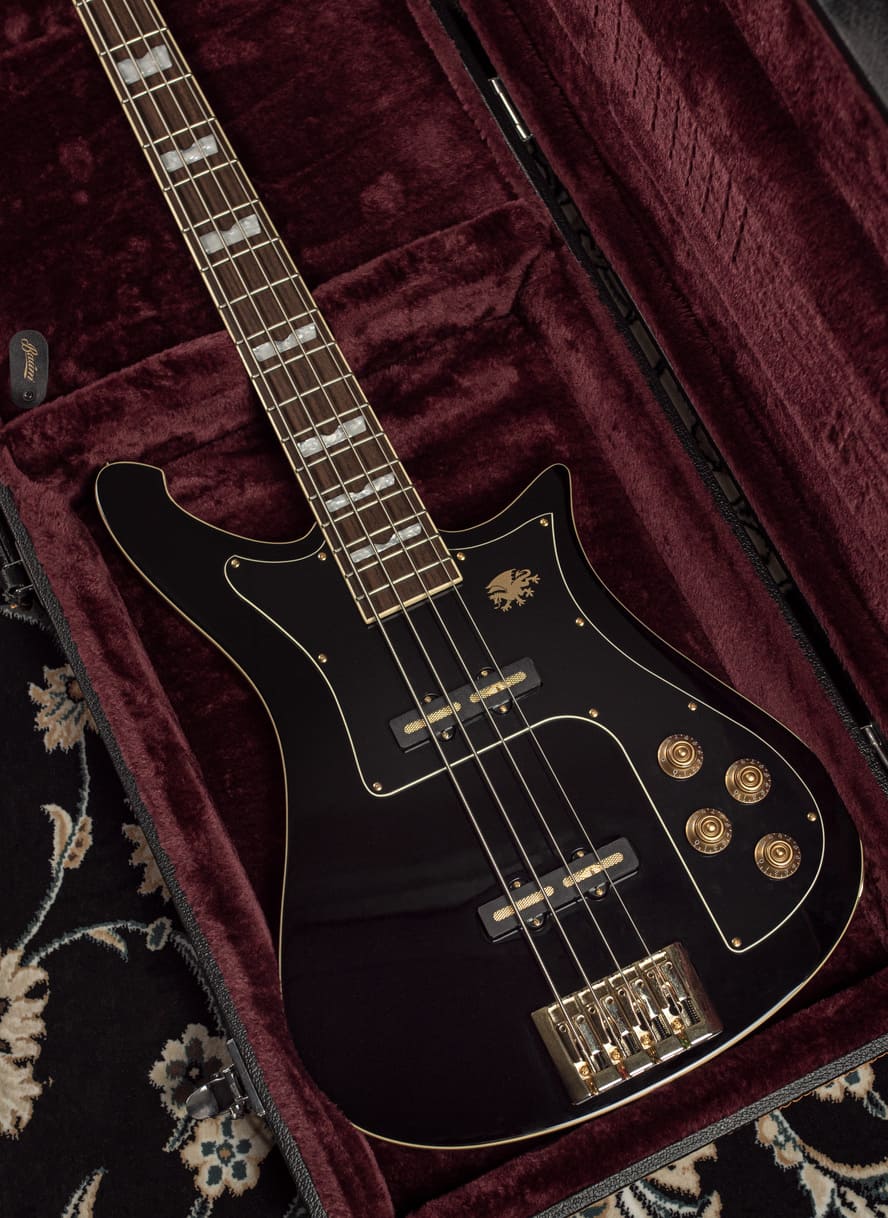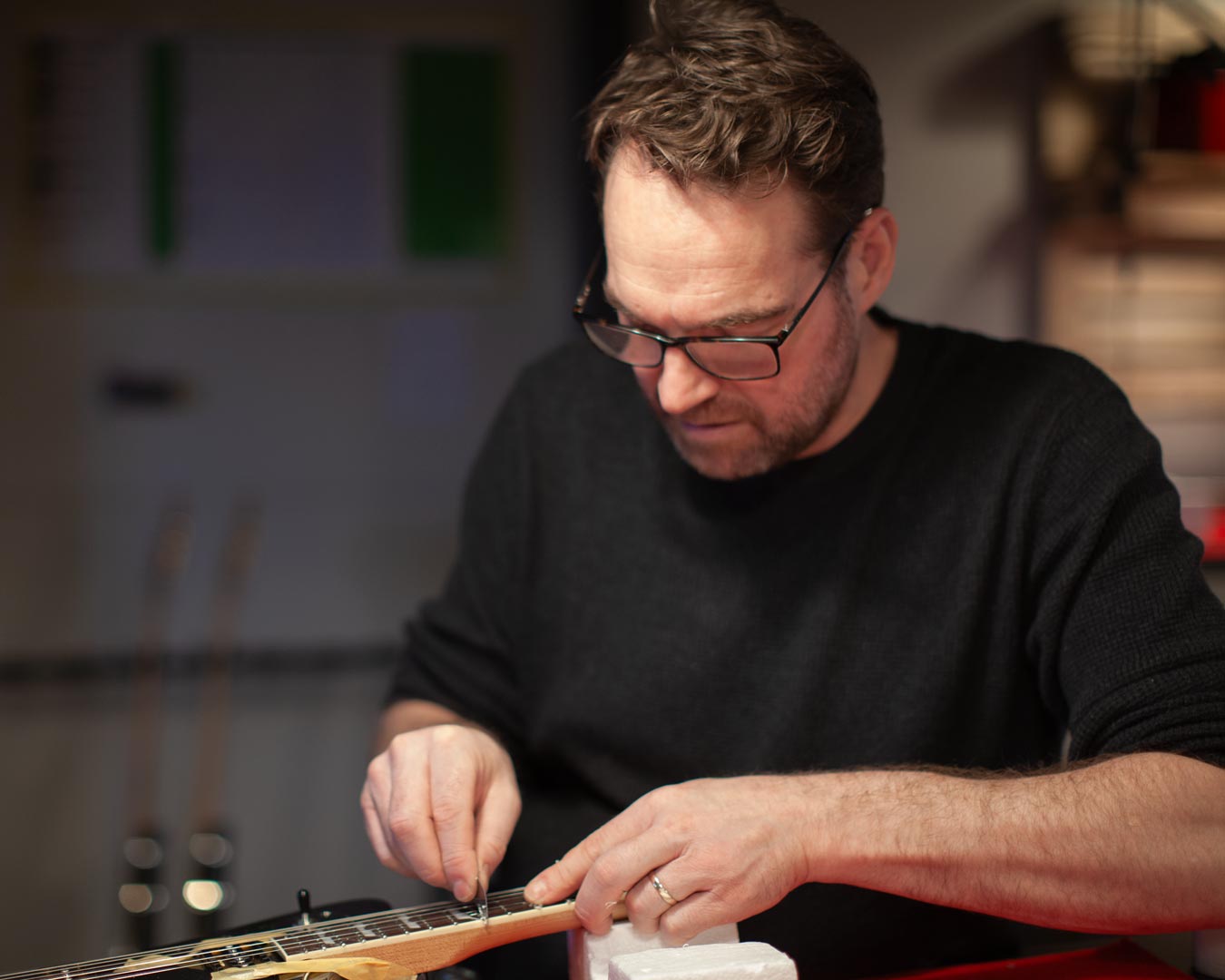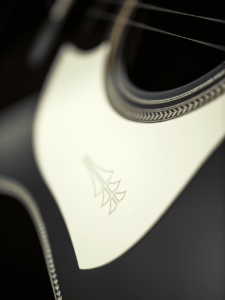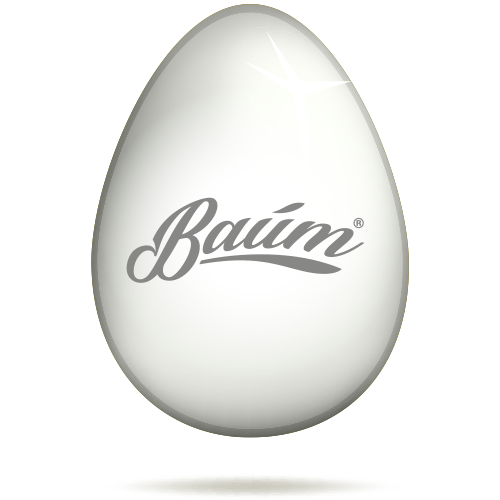Winter Guitar Care: Keeping Your Instrument Safe and Sound
Winter is coming, and with it comes bone-chilling temperatures and dry indoor air sucking out all humidity from the air. While we can bundle up to protect ourselves, what about our lovely guitars?
The winter season often causes cracking finishes and wood to bend and warp.
Our beautiful wood-bodied instruments need some special care during the cold season to prevent damage to their looks, tone, and playability.
In this blog post, we’re going to share our 5 practical tips on how to protect your electric or acoustic guitar from the winter’s harsh effects.
Why is this so important? Your guitar is made primarily of delicate wood. It breathes, expands, and takes moisture from the environment naturally. And even though it’s carved and worked into a new shape and sealed with lacquer, environmental conditions like sudden changes in temperature and humidity will continue to make your instrument react. Or in worse cases, bend, warp, expand, and contract.
TIP #1: STORE YOUR GUITAR IN A CLIMATE CONTROLLED ENVIRONMENT.
The first thing to remember is that your guitars don’t appreciate the extreme cold. Storing them in unfinished attics, garages, or basements may save space, but it’s not the best choice for your precious instruments. These spaces can get cold enough for water pipes to freeze from time to time, so just imagine what your guitar feels like.
Ideally, keep your guitars in warm, climate-controlled areas. But be aware that Forced-air heating can dry out the air and cause harmful damage by drying out the timber.
So it’s essential to strike a balance and a great way to restore humidity to a comfortable level is by using a guitar and case humidifier.
MOST COMMON ISSUES DURING WINTER.
Sharp fret ends: Have you ever noticed that your guitar suddenly has sharp fret ends? This happens because the fretboard contracts (but the frets don’t) when humidity suddenly is too low.
Warped necks: Happens for the same reason as the shrunken fretboard, but this one is much worse. Sometimes a truss-rod adjustment is enough, but if the neck warps too much, it may require extensive luthier work to fix this.
Finish cracks: This happens when the expansion and contraction of the lacquer or urethane finish is faster or slower than the expansion or contraction of the wood underneath. For some, this is not a bad thing as it may make your guitar look more vintage. For others, this may ruin the clean look of an instrument. Nitrocellulose lacquered guitars are prone to weather checking.
Bridge cracks (Acoustic guitars): Being made of wood, a sudden change in humidity and temperature can cause your acoustic guitar to crack. The extent of this damage varies from requiring some wood glue to needing a completely new bridge.
TIP #2: MAINTAIN PROPER HUMIDITY LEVELS.
Coming straight from the temperature, another important aspect is the humidity.
One of the biggest threats to your electric guitar during the winter is dry air, which can cause your guitar’s wood to shrink and lead to problems like cracking, warping, or changes in intonation. To combat this, invest in a room humidifier or a guitar-specific humidifier like the D’Addario Humidipak.
These products maintain consistent humidity levels, keeping your guitar’s wood in good shape.
The ideal relative humidity (RH) level is around 45-55% in your guitar room.
To monitor the humidity levels around your guitar, invest in a standalone hygrometer. These small devices provide real-time humidity data, allowing you to adjust the room’s humidity level accordingly. This simple tool can save your guitar from unnecessary damage.
TIP #3: STORE YOUR GUITAR IN ITS CASE.
Guitar cases aren’t just for transportation; they’re your instrument’s best friends during the winter.
Yes, your guitars look awesome hanging on your walls, but if your home or studio isn’t consistently climate-controlled, the case provides a better protective environment for your guitar since it protects it from sudden changes in humidity and/or temperature.
If your guitar didn’t come with a case, consider investing in one to shield it from the cold.

TIP #4 GET YOUR GUITAR SET UP REGULARLY.
You can prevent a lot of severe damage with some simple preventative maintenance.
Winter can bring subtle but noticeable changes to your guitar’s playability and sound. Fret buzz, sharp fret edges, altered action, and noisy pots are all signs of potential problems.
Prevent these issues with annual preventative maintenance, because if you’re playing your guitar during winter, and you start noticing small problems with intonation and action. A professional setup and detailing will address these issues before they evolve worse and keep your guitar sounding and playing at its best.
In general, it’s preferred to schedule a professional set-up whenever seasons change.
TIP #5: PLAY YOUR GUITAR (AND PUT IT BACK IN ITS CASE!)
Your guitar loves attention, and playing it regularly keeps the wood lively and the hardware in good shape. Have you ever picked up a guitar that just wasn’t as responsive as it used to be? And after a good solid hour of playing, it started to become good again?
When you play frequently, you’ll be more inclined to tune, clean, and restring your instrument. It’ll feel and sound better in return. After playing, wipe it down and securely store it in its case.
Another point is that playing your instrument regularly will also give you a better insight into whether your instrument changes or not.

CONCLUSION: PROTECT YOUR GUITAR THIS WINTER
Winter may be unavoidable, but with the right precautions, your guitar can get through it without much hassle. Store it in a climate-controlled environment, have an ideal and consistent humidity, use a protective case, keep up with regular maintenance, and play it often.
By following these simple steps, you’ll ensure your guitar remains in prime condition and ready to make beautiful music all year long. So, don’t let the cold weather get the best of your instrument – keep your guitar safe and ready to rock!
When you play frequently, you’ll be more inclined to tune, clean, and restring your instrument. It’ll feel and sound better in return. After playing, wipe it down and securely store it in its case.
Another point is that playing your instrument regularly will also give you a better insight into whether your instrument changes or not.










